You are using an out of date browser. It may not display this or other websites correctly.
You should upgrade or use an alternative browser.
You should upgrade or use an alternative browser.
ywheng89
100+ Head-Fier
Pros: Neutral and transparent sound
Solid build quality
Plenty of power
Solid build quality
Plenty of power
Cons: An on/off switch would be nice
General/Packaging/Build
Fiio is a brand that needs no introduction to fellow audiophiles, they are well established and they have positioned themselves among the top few famous chi-fi brands. My first encounter with Fiio’s product was a classic portable amp E6, probably 10+ years back when I first got into the hobby. Fast forward today, I have the Fiio K11 desktop dac/amp with me which boosts some serious power output figures for the asking price. The packaging is quite good for the asking price, it contains a power supply unit, USB cable and the K11 itself, well protected from any mishandling during transportation/logistics. The build quality is good for the asking price, with several inputs and output as well.
Specifications
- Main control chip (single-chip microcomputer): GD32F303RET6
- DAC: C543198 Supported audio formats: 384kHz/32bit PCM, DSD256 USB connector: Type-C
- Display type: Custom VA
- Dimensions: 147x133x32.3mm (including feet)
- Weight: About 407g
- Power supply: DC12V 2A external adapter
- SE power output 1: L+R≥520mW +520mW (32Ω, THD+N < 1%) (320/single-ended/high gain)
- SE power output 2: L+R≥60mW+60mW (300Ω, THD+N < 1%) (3000/single-ended/high gain)
- BAL power output 1: L+R≥1400mW+1400mW (32Ω, THD+N < 1%) (320/balanced/high gain)
- BAL power output 2: L+R≥250mW+250mW (300Ω, THD+N < 1%) (3002/ balanced/high gain)
- Frequency response: 20Hz~50kHz (Attenuation < 0.2dB)
- SNR: 123dB (A-weighted) Noise floor: PO < 2.8uV (A-weighted); BAL < 4.9uV (A-weighted)
- Output impedance: PO < 1.20 (32Ω load); BAL < 2.49 (32Ω load)
- THD+N: LO < 0.00035% (1kHz/10kΩ)
- Macbook Air M2 -> Foobar/Tidal
- SMSL M300SE
- Fiio K11 -> Earmen CH-AMP and PSU-3 (Fiio K11 is hooked up to my Earmen’s Linear PSU instead of the supplied power supply
- 7Hz Legato
- Aune AR5000
- Hifiman Sundara
My review is solely based on what I hear via my equipment and I never consider my reviews to be objective in any way rather a subjective approach. Do take into consideration that everyone’s ear anatomy is not the same, so the psychoacoustics perception might be different as well, but i believe it will not stray too far
Driving Power
- This has got to be one of the selling point for the K11, a whopping 1400mW on balanced out with high gain from 32Ω’s load, it is certainly not lacking in terms of raw power, which is sufficient to drive most headphones that aren’t hard to drive with the exception of several headphones of course,one of them being the Susvara, as well as IEMs
- 3 Gain levels, low, mid and high
- RGB logo with adjustable lighting effect on the device itself
- Upgradeable firmware
The tuning of the K11 is very neutral and transparent based on my listening experience, it doesn’t boost any frequency but just render it as it is. However, I do find the note weight is slightly lacking, but not too bad overall. Very good soundstage and imaging rendering
Listening Impression with the following gears
Aune AR5000
- AR5000 is very efficient and easy to drive, Low gain on K11 is sufficient to power the AR5000 to its best performance,on mid gain the dynamics are slightly better and also the bass control is slightly tighter
- Bass is punchy and tight, mid bass especially
- Sub bass has slightly better extension, although still lacking due to it being an open back
- Mids a little lacking due to the note weight is slightly lacking
- Slightly bigger soundstage than it already is
- Male vocal has slightly thicker texture and sounds fuller
- Female vocal is full sounding as well
- Not so much changes in terms of detail retrieval
- Overall, a very good synergy i would say other than the slightly thin note weight
7Hz Legato
- Legato is a bassy and warm IEM, aimed at delivering analog-ish speaker sound
- The mids are slightly recessed, but when paired with K11, the mids doesn’t sound that recessed anymore and it sounded a little bit more forward, both male and female vocal sounds a little bit more “crisp”
- Bass on the other hand sounds a little tame when paired with K11, the sub bass rumble is still quite strong but somehow i feel like it has a slightly faster decay, but mid bass is still punchy, a very refreshing experience if you ask me, still very fun sounding
- Not much changes on the detail retrieval as well
- Soundstage is slightly better in terms of better height,depth and width perception due to the tuning of K11
- Legato is not hard to drive, but K11 definitely have more than enough power to push it hard as Legato scales really well with power and source
- Sundara is a Planar headphone from Hifiman that requires quite a bit of power in order to perform at its best, K11 does have the capability to drive it to optimum performance
- Sundara on its own is quite neutral sounding with a slight hint of brightness in terms of tonality, my opinion is that, pairing the K11 with Sundara does make it a little bright and the slightly thin note weight doesn’t help that much
- The low end is fast and tight, the treble isn’t being elevated as well, but the slightly thin mid does affects the overall listening impression
- The DAC on K11 has a neutral and transparent sound profile
- Pairing it with the CH-AMP, the overall sound profile is quite transparent and mids does have slightly better body overall
- Dynamics does improve as well, a good pairing i would say
- In terms of sound, M300SE’s sound signature is leaning towards the “musical” sounding kind of tonality, slightly warm and the mids has more body compared to K11
- Soundstage is slightly smaller and less air compared to M300SE
- Power output figure is way lesser compared to K11, 148mw on M300SE vs 1.4w on the K11
- Although sporting different DAC, the differences are actually very minimal, the 43131 on M300SE is a DAC chip with built in amp section, where as on the Fiio’s 43198, it is a DAC only setup and the amp section is designed/implemented separately
- Depending on your preference in terms of sound signature, M300SE a more musical tuning, whereas K11 a neutral and transparent tuning
Final Thoughts
Having tested the K11 for several weeks now, it’s safe to say K11 has a very high price performance ratio, in terms of sound, they sound transparent and neutral and not to mention the power output is very high for the asking price, most dac/amps at this price range offers lower power output figure and doesn’t offer much features, K11 ticks many of the boxes in terms of features as well as sonic performance. K11 is definitely one of the good products that is easily recommendable and won’t break the bank. Definitely a 4.5/5 product!
*A big thanks to Fiio for sending this over for the purpose of this review. I thank them for their support and opportunity
Head over to their official store if you are interested in getting one:
Fiio K11 Aliexpress store - Non affiliated
Fiio K11 Product Page
genclaymore
Headphoneus Supremus
Pros: Small
Can stand on its sides
HP out and RCA out has separate volume settings
Type C USB
6.3mm SE and 4.4mm Balanced
Can stand on its sides
HP out and RCA out has separate volume settings
Type C USB
6.3mm SE and 4.4mm Balanced
Cons: None
I been eyeing the Fiio K11 ever since fiio announced It back in Sep 2023, The size of it is small, since its smaller then the aio units I had in the past, and how much power it offered for that size, it got my attention. The device comes with a Type C cable which I found to be kinda short as my PC is further away from the corner table that I have it on, I think the cable should have been longer, luckily I had a longer cable laying around.

On the rear of it you have a RCA Out, an optical port input and then a Coax (In/Out) connector, Then the Type C data connector for plugging it into your PC and the power plug. The Coax works as outputs when the Type C cable is connected to something. When it isn’t then then the Coax is input.

In the front of the K11 you have 6.3mm Single end, 4.4 Balanced, screen and then the volume knob which also has a press button function. When you hold it down it brings up the con-fig menu which you move thru by turning the knob back and forward. To select the options you press the volume button down. When you hold the volume button down longer the device will shuts down.

On the top of it is the RGB which you can change the colors of, make it pulse or even disable it which you also do thru the settings. On the bottom of it, is the rubber foot pad which stops it from sliding around on the table, the K11 can be turned on its side which.




I did run into an issue with the K11 with audio delay, but a Firmware update to 1.22v solved that, as the K11 I bought was on 1.05v stock firmware. After Wards Every thing worked perfectly, I didn’t have any other issue. The over all experience with the K11 been great.
Lets talk about power, the 6.3mm HP port supports 720mW @ 160hms,520mW @ 32 Ohms and 60mW at 300ohms, While the 4.4mm offers 570mW @ 16Ohms, 1400mW @ 32 Ohms and finally 250mW @ 300Ohms. So it offer a lot of power for the price. My Hifiman HE-9 and Sundara pairs nicely with the K11, sounded really good with it.
Settings
Music Bee with WASAPI Exclusive mode using the default Filter which is 3. Both of the two songs I used are native flacs I checked.
Headphones
Hifiman HE-R9 (6.3mm)

Bedowin – Voices in my head
Right away the kick drum goes low and has power behind it, like I mention before it doesn’t sound muddy to me. The voices sounds like to me are spreading from in directly in front of me to the sides, as the background singers that standing next to the main and spreading to the side of each ear. I can hear them breathing before they say something. The song makes it easy since it doesn’t have much going on just a few instruments, Claps besides the singers.
Ramnstien – Ich Will (Terence Fixmer mix)
The bass at the start has force behind it while still allowing me to hear the low voice in the background. The hit hat and the snare also sound really good with the right amount of Detail. Nothing is running into each other.
Hifiman Sundara (4.4mm)

Bedowin – Voices in my head
The kick drum sounds like its going deep as it hits and its sound spreads a little bit from the location of it in the sound image, feeling like its coming from a below position in the front of me from the tad bit left of me, if they makes sense. With the snares being a tad more to the center or off center as it projecting towards my Left side towards my ear. Snares have the good details, not too much either as it isn’t bright, it just clean. Including the light piano notes that I hearing, that sounds like there in the distance.
I can hear the breath of the voices in the right before he sings (Ahh) as it has an echo like sound thru the sound stage, which also includes the other voices. The over all song is outside my head and I would say it sounds open, and all instruments and voices are separated from each other and not over lapping.
Ramnstien – Ich Will (Terence Fixmer mix)
Right away the crisp snares and the hit hat that can be clearly heard and the kick drums that has some impact to it hits, that comes off as going from my center and the snares near my left ear. The Synth and the other sounds are heard with ease too. Separation is good here too, I didn’t have an issue with hearing the voice loop in the background that has lower volume then every thing else that was going on in the song. None of the instruments or other sounds run into each other.
Conclusion
After spending a month and days with the Fiio K11, It been the best purchase I made. I been enjoying it lot both of my headphones, listening to music, watching movies or playing games. Other then that minor issue that was fixed with the firmware update, there been no other issues and every thing else been perfect. For its price I'm didn't expect to be that happy with it. Over all I recommend it!.

On the rear of it you have a RCA Out, an optical port input and then a Coax (In/Out) connector, Then the Type C data connector for plugging it into your PC and the power plug. The Coax works as outputs when the Type C cable is connected to something. When it isn’t then then the Coax is input.

In the front of the K11 you have 6.3mm Single end, 4.4 Balanced, screen and then the volume knob which also has a press button function. When you hold it down it brings up the con-fig menu which you move thru by turning the knob back and forward. To select the options you press the volume button down. When you hold the volume button down longer the device will shuts down.

On the top of it is the RGB which you can change the colors of, make it pulse or even disable it which you also do thru the settings. On the bottom of it, is the rubber foot pad which stops it from sliding around on the table, the K11 can be turned on its side which.




I did run into an issue with the K11 with audio delay, but a Firmware update to 1.22v solved that, as the K11 I bought was on 1.05v stock firmware. After Wards Every thing worked perfectly, I didn’t have any other issue. The over all experience with the K11 been great.
Lets talk about power, the 6.3mm HP port supports 720mW @ 160hms,520mW @ 32 Ohms and 60mW at 300ohms, While the 4.4mm offers 570mW @ 16Ohms, 1400mW @ 32 Ohms and finally 250mW @ 300Ohms. So it offer a lot of power for the price. My Hifiman HE-9 and Sundara pairs nicely with the K11, sounded really good with it.
Settings
Music Bee with WASAPI Exclusive mode using the default Filter which is 3. Both of the two songs I used are native flacs I checked.
Headphones
Hifiman HE-R9 (6.3mm)

Bedowin – Voices in my head
Right away the kick drum goes low and has power behind it, like I mention before it doesn’t sound muddy to me. The voices sounds like to me are spreading from in directly in front of me to the sides, as the background singers that standing next to the main and spreading to the side of each ear. I can hear them breathing before they say something. The song makes it easy since it doesn’t have much going on just a few instruments, Claps besides the singers.
Ramnstien – Ich Will (Terence Fixmer mix)
The bass at the start has force behind it while still allowing me to hear the low voice in the background. The hit hat and the snare also sound really good with the right amount of Detail. Nothing is running into each other.
Hifiman Sundara (4.4mm)

Bedowin – Voices in my head
The kick drum sounds like its going deep as it hits and its sound spreads a little bit from the location of it in the sound image, feeling like its coming from a below position in the front of me from the tad bit left of me, if they makes sense. With the snares being a tad more to the center or off center as it projecting towards my Left side towards my ear. Snares have the good details, not too much either as it isn’t bright, it just clean. Including the light piano notes that I hearing, that sounds like there in the distance.
I can hear the breath of the voices in the right before he sings (Ahh) as it has an echo like sound thru the sound stage, which also includes the other voices. The over all song is outside my head and I would say it sounds open, and all instruments and voices are separated from each other and not over lapping.
Ramnstien – Ich Will (Terence Fixmer mix)
Right away the crisp snares and the hit hat that can be clearly heard and the kick drums that has some impact to it hits, that comes off as going from my center and the snares near my left ear. The Synth and the other sounds are heard with ease too. Separation is good here too, I didn’t have an issue with hearing the voice loop in the background that has lower volume then every thing else that was going on in the song. None of the instruments or other sounds run into each other.
Conclusion
After spending a month and days with the Fiio K11, It been the best purchase I made. I been enjoying it lot both of my headphones, listening to music, watching movies or playing games. Other then that minor issue that was fixed with the firmware update, there been no other issues and every thing else been perfect. For its price I'm didn't expect to be that happy with it. Over all I recommend it!.
Attachments
Last edited:
Mataudiophiles
New Head-Fier
Pros: Sound, quality, function...
Cons: Nothing on this price...
FiiO K11 Balanced DAC/AMP
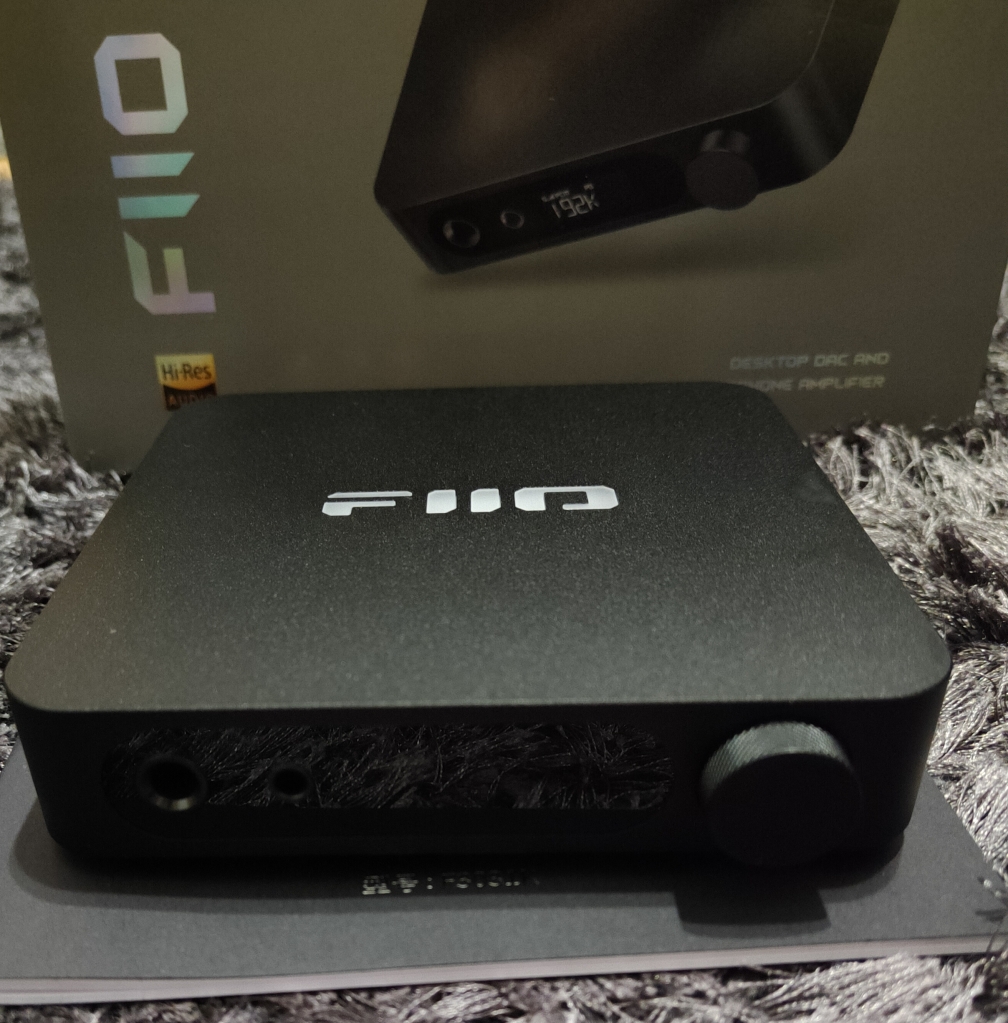
FiiO K11 Balanced DAC/AMP
INSTAGRAM: LINK
Prelude:
FiiO is one of those brands that never sleeps, literally, because they constantly release better and better equipment, not only those from the budget intended for the premium segment, but also many much cheaper items. One of the newest and at the same time very reasonably priced items is a small headphone amplifier with a built-in DAC circuit for USD 129. There wouldn’t be anything special about it if it weren’t for the fact that it is a fully balanced unit with a line output. So I invite you to read.
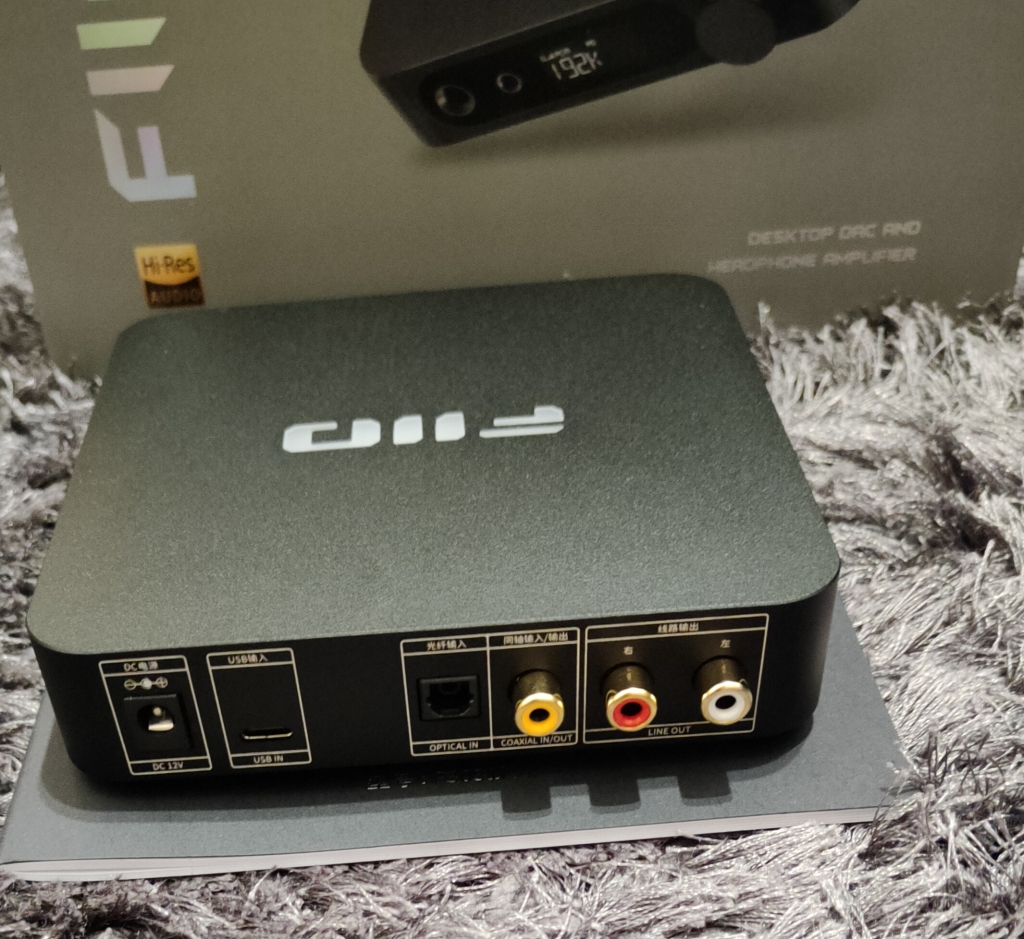
Unboxing and use:
Unpacking the device itself is a pleasant process because in a nice cardboard box we will find an adapter from a large jack to 3.5 mm, a USB cable, a good quality switching power supply and our device. Two colors are available, black and white. I received the black variant, which is matte and picks up fingerprints moderately. On the front there is an LCD display and a volume knob, which is also a switch and a control button for our device. In addition, there is, of course, a large jack output and a balanced 4.4mm output. The device is really small and is covered with a rubber pad at the bottom, which ensures a secure position of the device. At the top there is an illuminated FiiO logo and on the back we have a USB C input, coaxial input and output, optical input and RCA line output. I must admit that this is a pretty solid set of inputs and outputs. It is true that I lacked an input to connect my DAC, but in this price range and with such a small device, I completely understand that some compromises are inevitable. So I don’t see it as a disadvantage, but only as a personal preference. In general, the layout and arrangement of sockets are very well thought out, which makes the k11 comfortable to use because it is a completely functional all-in-one device
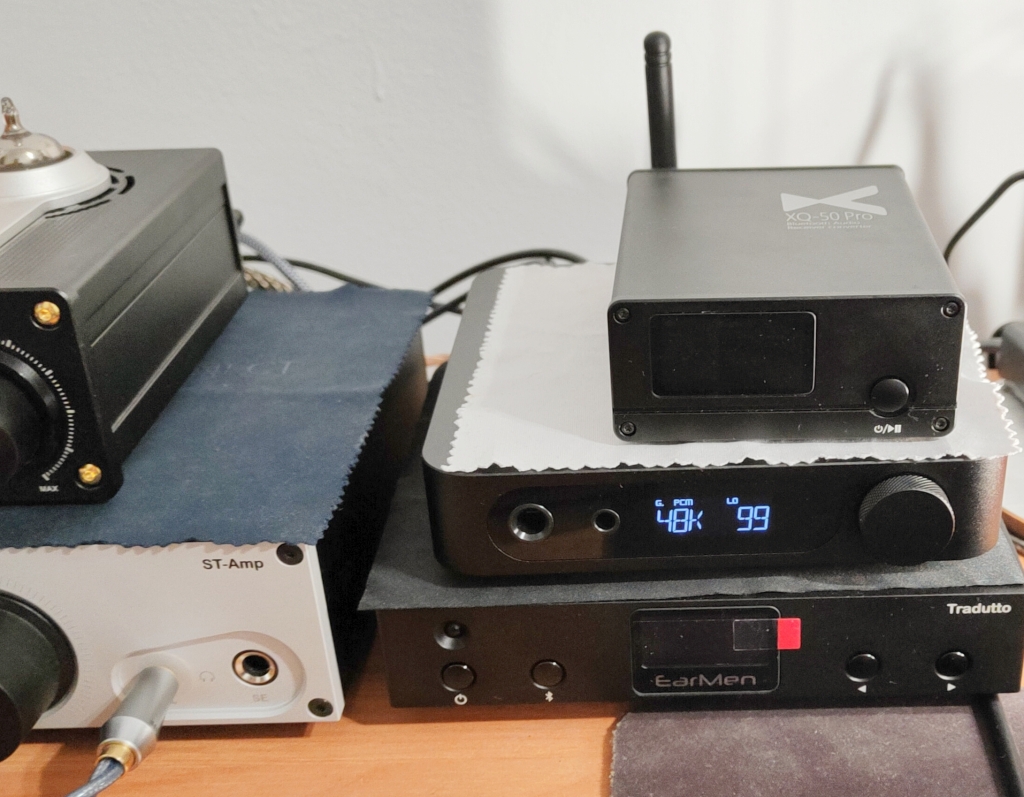
Functions:
It is worth noting that when it comes to functionality, Fiio has always represented a very high level. In fact, this has been happening from the very beginning of the company’s operation. If any function is available, you will find it in Fiio. So in k11 we have six types of functional and sound-changing digital filters, full backlight adjustment, and the ability to update the software. However, that’s not all. Using the volume knob, we can quickly switch between the line and headphone outputs. The former always functions as a preamplifier with a separate volume control. The headphone output has three independent gain levels and a 99-step volume control. Each gain stage has separate graphs and a slightly different sound signature. The only thing we don’t have here is a line input, but on the other hand, at this price it would be a crime to add so many functionalities, although I think it’s more a matter of the small size of the device and lack of space on the housing, rather than cutting costs.
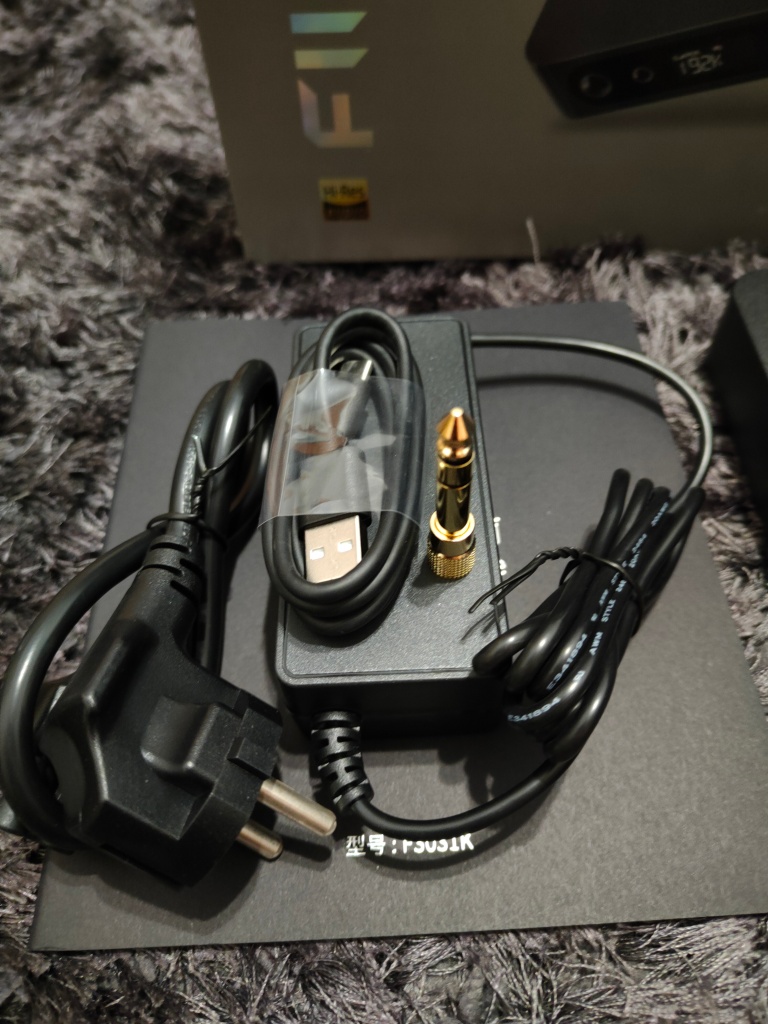
Sound:
Bass: In general, the entire lower band is kept close to linearity and neutrality, with a tint towards minimal warming, however, allowing us to enjoy listening. The bass is clear and not dominant. K11 is a very detailed and balanced position, which translates into great control of the lower bands. All in all, you can clearly feel the character of the DAC chip used here. It is worth adding here that the purity of the sound is absolutely amazing and we have a completely black background. The bass, although neutral, attracts attention and is revealed when required and necessary. At the same time, in songs that do not need it, it perfectly gives space to other sounds. The bass itself, despite its neutrality, can go low and this is a great compromise between musicality and analyticality. I’m glad that Fiio decided on this tuning, because it is very pleasant to listen to.
Midrange: The midrange faithfully follows the linear and even tuning of the K11 signature. The vocals are very clear and transparent, they are not lifeless, but I wouldn’t call them overly colored. This midrange delights with the amount of detail and information, the span of the stage is very interesting due to the great 3D plane. The plan is not overly broken down into boli, instead it naturally breaks down all sounds into prime factors. At the same time, for USD 129, it is probably one of the best resolutions I have seen in equipment of this class. The positioning and separation of instruments are at a very good level. Of course, vocals are not as engaging as R2R-based structures. However, in technical and analytical terms, it is a huge qualitative leap. What I mean here is sacrificing candy warmth to analyze the music and admire its technical layer. Of course, this is not an exaggeration, and the Fiio K11 still plays lively, retaining all musical features.
Treble: What I noticed most compared to other Fiio products that I remember is a significant softening of the treble, we no longer have U-shaped tuning. The treble fits smoothly and linearly into the rhythm of our favorite music. K11 is a device tuned closer to the reference than the budget we will have to pay for this device could indicate. The upper bands are full of information and reproduce strings and other instruments very naturally. I think using cirrus bones is a very good step. Personally, I like them very much and their influence can be clearly heard in the music. In fact, the K11 is one of the most neutral devices I have ever encountered, thanks to which it perfectly captures the natural sound of the connected headphones.
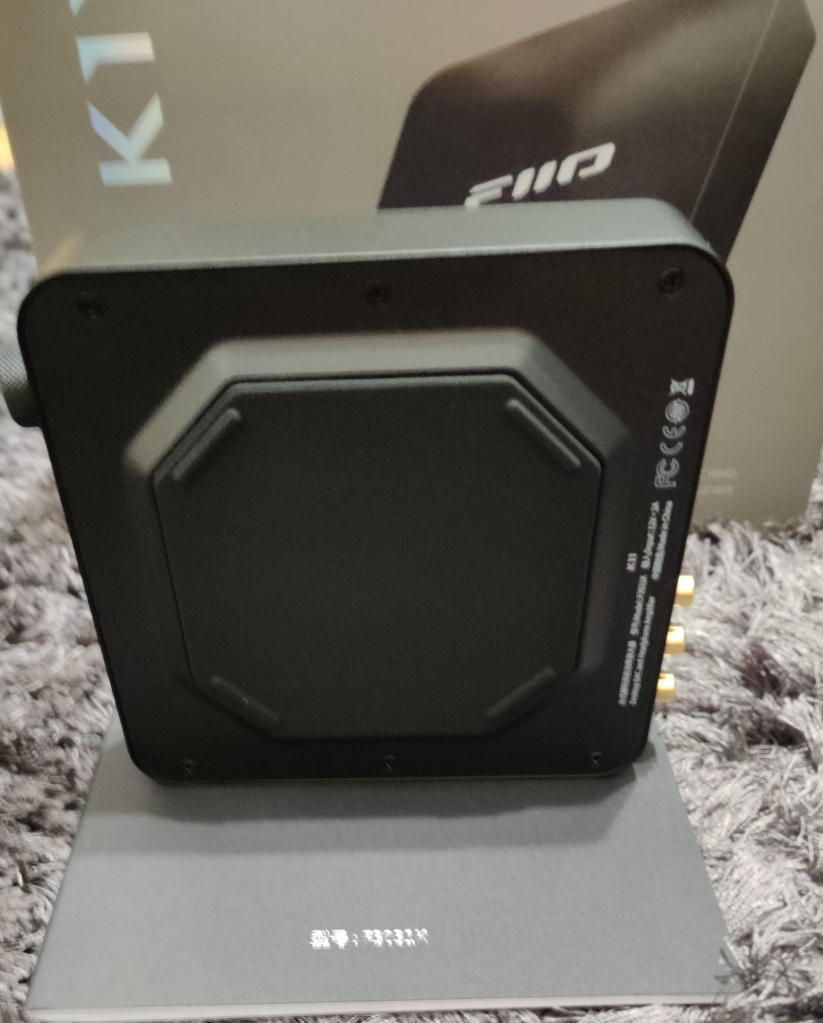
Comparisons:
FiiO K11 ($129) VS EarMen st-amp ($199)
First of all, ST-AMP has a few additional functions that affect functionality, it has both a single and balanced line input. However, K11 is much smaller and takes up less space on the burek. It’s worth noting here that the st-amp is a bit brighter and more entertaining. K11 has a more linear, balanced sound. ST-AMP is one of my favorite amplifiers, but if I were looking for analysis and references, I would go towards the k11. Thanks to the gain control, the K11 copes slightly better with very effective headphones.
FiiO K11 (129USD) VS xDuoo ta01b (170USD)
XDuoo ta-01b is an excellent DAC/AMP based on cirrus chips, and with a hybrid amplifier design in class A. The benefits and natural warmth of the tube in the TA01B is something that I personally love, but the K11 is a more universal device with tuning that is technically I think it’s very good.
FiiO K11 (129USD) VS xDuoo xd05plus (269USD)
FiiO K11 is a stationary device, while xd05plus is quite mobile. The XD05Plus also has a few more features. However, its sound is warmer and more entertaining. After balancing, Fiio has a larger stage and greater control thanks to not only more power but also three gain levels. However, xDuoo XD05plus has irreplaceable mobility and this significantly increases its functionality. So I consider both devices to be very good and worth attention.

Summary:
Fiio surprised me once again. Not only did they create a very budget-priced unit with incredible build quality, but they also armed it with the latest technology. Great linear and natural/neutral tuning is another argument for the k11. The line output with volume control is perfect for active speakers or devices with an AUX input. In fact, when it comes to sound, the DAC/AMP is very well tuned between musicality and analysis, which allows it to be used for reference listening as well as for everyday listening. Compared to the competition with a total value up to PLN 1,000, it is difficult to find a clear rival for the K11. Not only because of the sound itself, which I personally like very much, but above all because of the multitude of functions. What I miss in the k11 is definitely the Bluetooth function, fortunately we have an optical and coaxial input, so it’s not that big of a problem, and AUX inputs. However, these are marginal comments and I would actually prefer a device that sounds great without unnecessary gadgets than a device that does everything without good sound. The K11 is a great little desktop device that comes with its own power supply and a surprising amount of clean power. I consider the K11 to be a very versatile device with a beautiful tone and excellent functionality, which is why I highly recommend it to all music fans. Regardless of the level of advancement in the musical hobby, I think that everyone will find something interesting and suitable for themselves in k11.
J
jmwant
Great review! I find the rgb light cool, will be waiting for an added Bluetooth version of these.
Mataudiophiles
By adding an optical input, you can use an external Bluetooth receiver, for example the xDuoo QX50 pro works great.
littlenezt
100+ Head-Fier
Pros: +Technicalities
+Neutrality
+POWER
+Build Quality
+RGB
+Display
+Neutrality
+POWER
+Build Quality
+RGB
+Display
Cons: -Output Impedance
FIIO K11
1x CS43198 + 2x SGM8262-2
$129

First let me thank FIIO for sending me the K11 in for review, rest assured my review is 100% my own personal opinion.
If you're interested on the K11, you can check the official FIIO page below
https://www.fiio.com/k11
Unboxing
Inside the box, you get :

For its price I feel the K11 build is on the premium side,
It is made from metal, and the FIIO logo is actually a fully lit RGB LED.

At the front, it has a 6.3mm and 4.4mm port, a display, and a multifunction rotary knob

At the back, it has DC in, USB in, Optical in, COAX in, Line Out

Bottom side of the K11, it has a big rubber feet so the unit wont easily slide around your desk.

Menu & Options
On the K11 itself you actually can set A LOT of options.
Pressing the Multifunction knob once, you can select the input of K11
Holding the Multifunction knob, you can select :
Sound
I would like to describe the sound of the K11 as a very neutral sounding DAC-AMP
The K11 has 6 filters to choose, for this review I'm describing the sound using the number 3 filter.
Bass on the K11 is very neutral but has a tight punch and impact, it has a normal decay, not sounding really wet or super musical. The K11 does not add highlight to your bass at all, it really is neutral sounding DAC-AMP, but keep in mind Neutral is NOT the same as thin sounding.
Midrange on the K11 is again, very neutral sounding, it does not add highlight or more weight or on the opposite side, thinning out your mids, it really is a very neutral sounding DAC-AMP.
Midrange sounds completely transparent and clear. Decay is again on the normal side, not short but not long / wet sounding either.
Treble on the K11 is “normal” by that I mean it is not smoothing out or adding more sparkle to your treble.
Detail of the treble for its price is above average, probably thanks to the lack of smoothing, though don't worry, the K11 don't push the treble forward either
Layering of the treble is above average for its price,
You can hear multiple layer of the decay, though it is lacking a bit of that superior layering like on more premium model, but for its price it is above average or I could even say it is punching above its price.
Timbre is good but nothing special, definitely not digital sounding but not on the realm of organic sounding like your ladder DAC either.
Technicalities
Is above average for its asking price of $129
Stage is on the larger side, for context, it sounds even bigger than its older brother the K5 and K5 ESS.
Detail Retrieval is on par with its older brother K5 and K5 ESS, so that means it is punching above its price, it has a very good detail retrieval, but lacking a bit of the micro highlight of more premium model.
Imaging is good, Its somewhat enhance my Moondrop CHU 2 to sounds a bit more holographic, so it means if your IEM / Headphones already has holographical capabilities, the K11 won't hold back your Imaging but in fact it will enhance it a little bit to sound even more holographical.
Separation & Positioning is excellent, thanks to it's large soundstage, you can easily pinpoint which sound is playing and where its position very easily.
Output Power is very powerful for a budget device
it is rated at 1400mw @32ohm on the 4.4mm balanced output
Output Impedance is a bit high on the 4.4mm balanced output, it is rated at 2.4ohm, so it could somewhat affect the FR of your super low impedance IEM (rule of 8)
3.5mm vs 4.4mm
There is more power with the balanced output (obviously) and superior stage size and object separation, tonality wise it sounds the same.
Comparation
FiiO K5 & K5 ESS
It's older brother, a bit more expensive than the K11.
The K5 & K5ESS sounds a bit more dull compared to the K11, and technicality wise, It is very close, but the K11 has superior stage size.
Unless you want a more relaxed sounding DAC-AMP, the K11 in my opinion is more superior than both K5&K5 ESS.
FiiO K7
Even more expensive compared to the K11.
The K7 has superior micro detailing and a bit more open sounding treble, and sounds a bit more organic and has more weight compared to the K11, probably thanks to the superior THX AAA amplifier that K7 use.
Conclusion
K11 is a very competitive cost effective desktop entry level DAC-AMP, it sounds very neutral and has a very good technicalities for its asking price.
Again, FIIO has just made me rethink and set my price – performance ratio to a new degree.
Now you just need to spent $129 USD to get this kind of performance.
I can recommend the K11 if you're in need of a very neutral and very competitive cost effective DAC-AMP combo IF you don't use a very low impedance IEM.
That's all from me for now,
thanks for reaching this far !
1x CS43198 + 2x SGM8262-2
$129

First let me thank FIIO for sending me the K11 in for review, rest assured my review is 100% my own personal opinion.
If you're interested on the K11, you can check the official FIIO page below
https://www.fiio.com/k11
Unboxing
Inside the box, you get :
- K11
- Power Adapter
- Power Cable
- 6.3mm Adapter
- USB C to A
- Quick Start Guide
- Warranty Card

For its price I feel the K11 build is on the premium side,
It is made from metal, and the FIIO logo is actually a fully lit RGB LED.

At the front, it has a 6.3mm and 4.4mm port, a display, and a multifunction rotary knob

At the back, it has DC in, USB in, Optical in, COAX in, Line Out

Bottom side of the K11, it has a big rubber feet so the unit wont easily slide around your desk.

Menu & Options
On the K11 itself you actually can set A LOT of options.
Pressing the Multifunction knob once, you can select the input of K11
Holding the Multifunction knob, you can select :
- Gain
- Line Out Mode
- Filter
- UAC Type
- LCD Brightness
- LCD Time
- RGB Mode
- RGB Pulsating
- RGB Brightness
- Update
- Reset
- FW Version
- Return
Sound
I would like to describe the sound of the K11 as a very neutral sounding DAC-AMP
The K11 has 6 filters to choose, for this review I'm describing the sound using the number 3 filter.
Bass on the K11 is very neutral but has a tight punch and impact, it has a normal decay, not sounding really wet or super musical. The K11 does not add highlight to your bass at all, it really is neutral sounding DAC-AMP, but keep in mind Neutral is NOT the same as thin sounding.
Midrange on the K11 is again, very neutral sounding, it does not add highlight or more weight or on the opposite side, thinning out your mids, it really is a very neutral sounding DAC-AMP.
Midrange sounds completely transparent and clear. Decay is again on the normal side, not short but not long / wet sounding either.
Treble on the K11 is “normal” by that I mean it is not smoothing out or adding more sparkle to your treble.
Detail of the treble for its price is above average, probably thanks to the lack of smoothing, though don't worry, the K11 don't push the treble forward either
Layering of the treble is above average for its price,
You can hear multiple layer of the decay, though it is lacking a bit of that superior layering like on more premium model, but for its price it is above average or I could even say it is punching above its price.
Timbre is good but nothing special, definitely not digital sounding but not on the realm of organic sounding like your ladder DAC either.
Technicalities
Is above average for its asking price of $129
Stage is on the larger side, for context, it sounds even bigger than its older brother the K5 and K5 ESS.
Detail Retrieval is on par with its older brother K5 and K5 ESS, so that means it is punching above its price, it has a very good detail retrieval, but lacking a bit of the micro highlight of more premium model.
Imaging is good, Its somewhat enhance my Moondrop CHU 2 to sounds a bit more holographic, so it means if your IEM / Headphones already has holographical capabilities, the K11 won't hold back your Imaging but in fact it will enhance it a little bit to sound even more holographical.
Separation & Positioning is excellent, thanks to it's large soundstage, you can easily pinpoint which sound is playing and where its position very easily.
Output Power is very powerful for a budget device
it is rated at 1400mw @32ohm on the 4.4mm balanced output
Output Impedance is a bit high on the 4.4mm balanced output, it is rated at 2.4ohm, so it could somewhat affect the FR of your super low impedance IEM (rule of 8)
3.5mm vs 4.4mm
There is more power with the balanced output (obviously) and superior stage size and object separation, tonality wise it sounds the same.
Comparation
FiiO K5 & K5 ESS
It's older brother, a bit more expensive than the K11.
The K5 & K5ESS sounds a bit more dull compared to the K11, and technicality wise, It is very close, but the K11 has superior stage size.
Unless you want a more relaxed sounding DAC-AMP, the K11 in my opinion is more superior than both K5&K5 ESS.
FiiO K7
Even more expensive compared to the K11.
The K7 has superior micro detailing and a bit more open sounding treble, and sounds a bit more organic and has more weight compared to the K11, probably thanks to the superior THX AAA amplifier that K7 use.
Conclusion
K11 is a very competitive cost effective desktop entry level DAC-AMP, it sounds very neutral and has a very good technicalities for its asking price.
Again, FIIO has just made me rethink and set my price – performance ratio to a new degree.
Now you just need to spent $129 USD to get this kind of performance.
I can recommend the K11 if you're in need of a very neutral and very competitive cost effective DAC-AMP combo IF you don't use a very low impedance IEM.
That's all from me for now,
thanks for reaching this far !
Last edited:
geoffalter11
nice review... it is good that tone doesn't change between outputs even though power does. Products that have a tone change between outputs is a no go for me. Should sound good just less headroom. I like your review a lot. Thank you!
jeromeoflaherty
New Head-Fier
Pros: Great output power for this price (especially from the balanced output)
Very nice looking device
Lovely well thought out screen
Tons of features for an entry level device
Very nice looking device
Lovely well thought out screen
Tons of features for an entry level device
Cons: Balanced output SINAD score could be better
Volume control not as premium feeling as other amplifiers
Volume control not as premium feeling as other amplifiers
The K11 is FiiO’s new entry level headphone amplifier. It is both an incredible nice looking device and also incredible feature rich. This might be the only headphone amplifier you will ever need, to find out why, please read on:
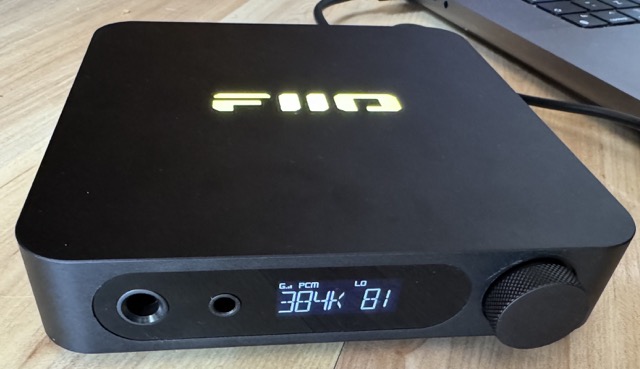
Thanks to FiiO for providing me with the K11 for this review.
I would also expect future FiiO products K15, K17 etc to be based of this new platform and contain a similar display to access those features as the K11.
Before we get into the features and sound quality lets check the packaging:
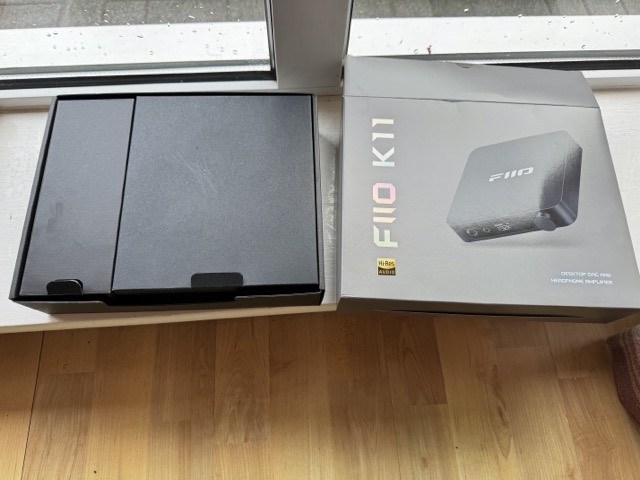
And nicely laid out within the box:
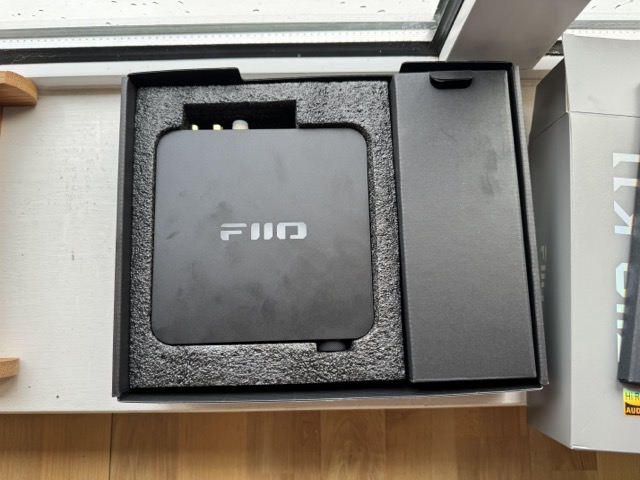
Once you take everything out of the box, as well as the power supply you get a USB cable and a 3.5mm adapter.
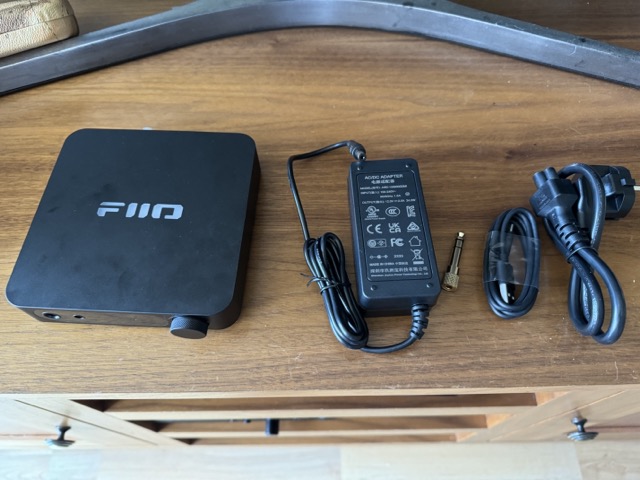
Looking at the K11 itself I thought it might be usefull to compare the size with the K7:
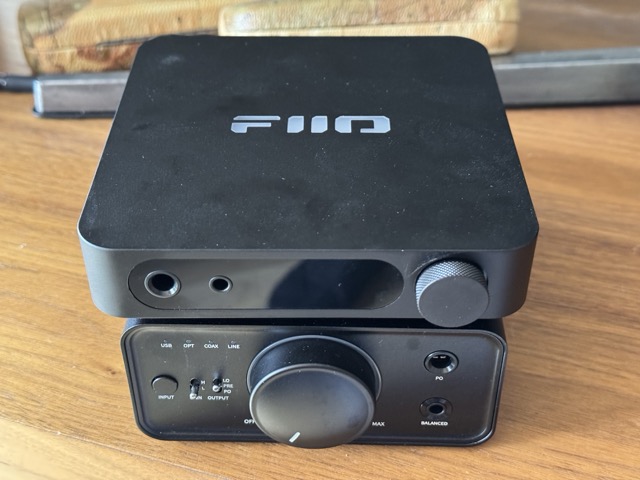 On the front you get a nice volume control (that is volume control is central to accessing the features of the K11 - see later on for details) and both a balanced 4.4mm and a 3.5mm headphone jacks.
On the front you get a nice volume control (that is volume control is central to accessing the features of the K11 - see later on for details) and both a balanced 4.4mm and a 3.5mm headphone jacks.
As you can see it is slightly wider but less tall than the K7, the underside of the K11 has a nice non-slip mat to keep it in place.
Around the back you a modern USB-C connection (instead of the older USB connection on the K7), a optical and a coaxial inputs and a RCA output (LO in FiiO terminal) for connection to an external amplifier or powered speaker.
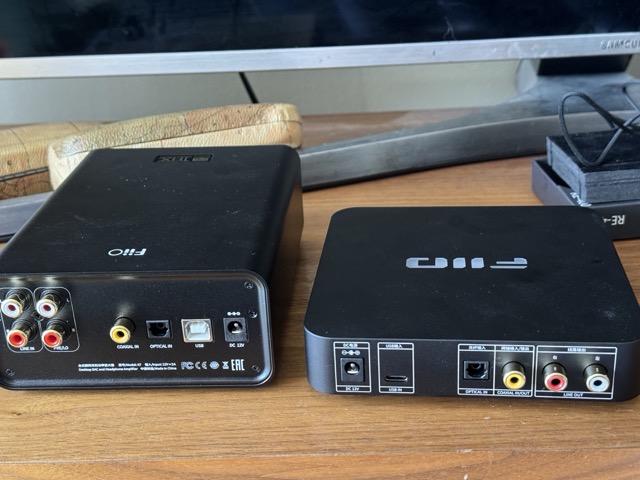
Note: It lacks the RCA input that K7 provides but the interesting the coaxial can act as an output as well as input.
Overall the K11 has a very clean and well laid out design.
First the screen is small but easy visible and the ‘home’ page information is nicely laid out:
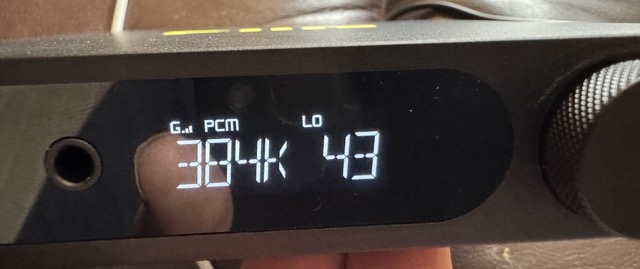 The screen by default shows:
The screen by default shows:
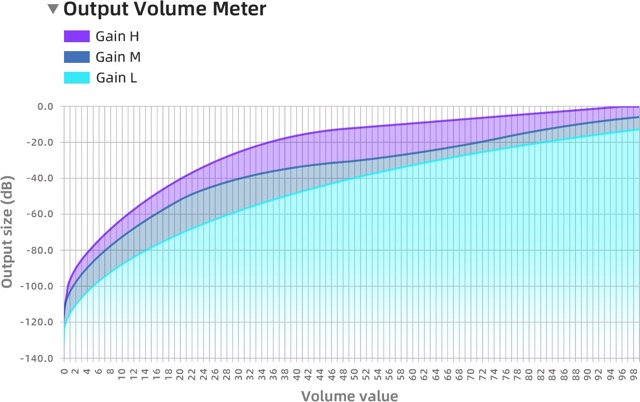

When connected to a PC or MAC you can utilise the UAC 2 mode above and this provides excellent hi-res audio support of up to 384K.
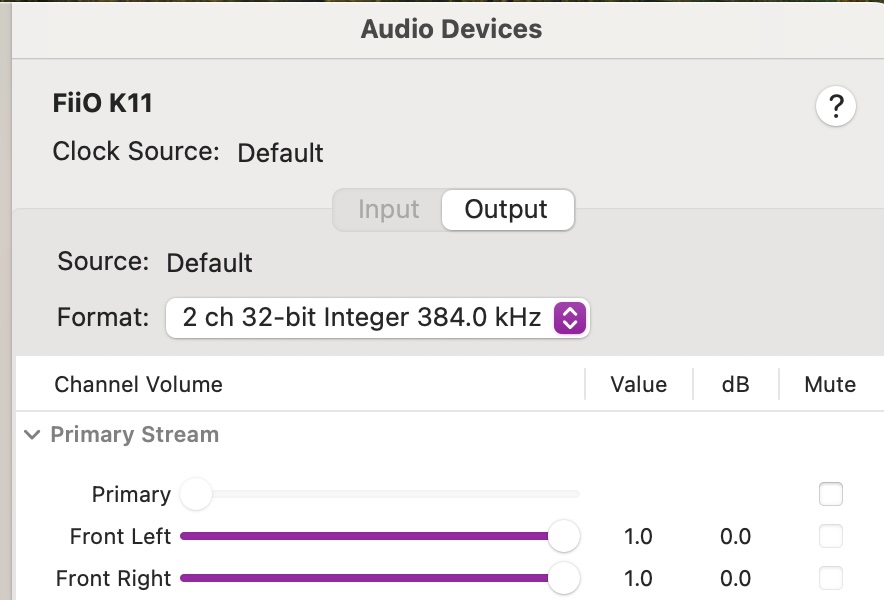
When connected in UAC 1 mode it only supports 96 Khz:
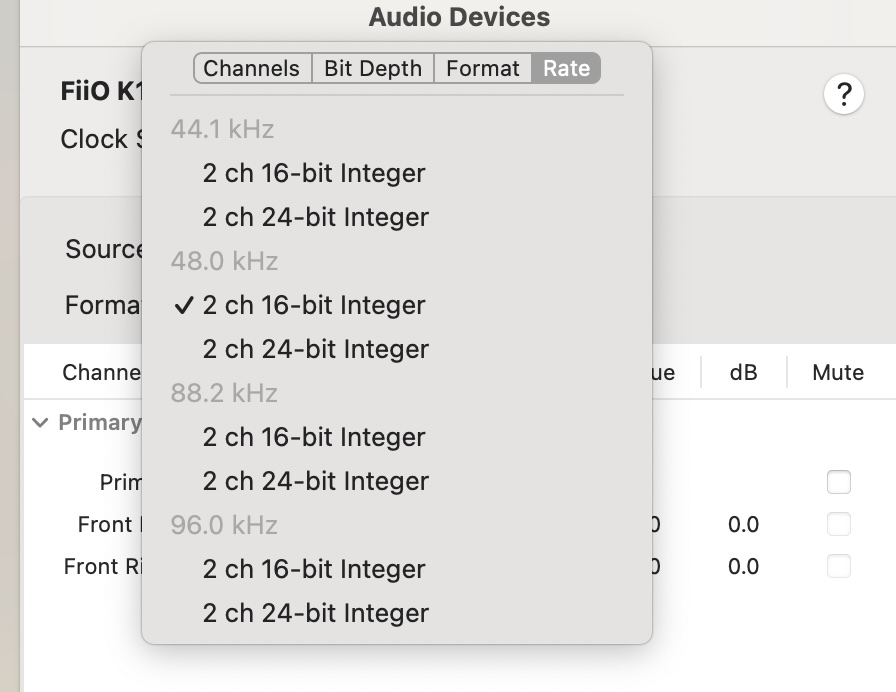
Before we get into the sound quality and playing with some of these features, lets delve a little into the measurements:
I also tried the K11 with my new iPhone 15 (using its USB-C connection):
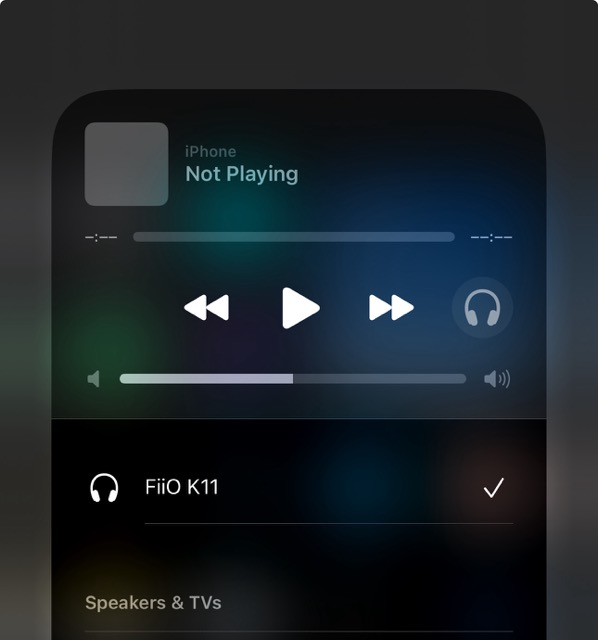
Though I was limited to 44khz output - this is an IOS restriction I believe.
The CS43198 DAC itself is an excellent choice and used in many more expensive headphones amplifiers
and FiiO themselves has used this DAC in various configurations include dual CS43198 in the FiiO JadeAudio KA5.
I would not be surprised if we see a K13 or K15 with both dual CS43198 and dual SGM8262-2 in the next year.
By only having a single CS43198 the K11 does suffer from low THD+N / SINAD measurements especially when measuring
the balanced output as we can see in the figures below:
The 4.4mm balance SINAD score 97 is reasonable for an entry level device.
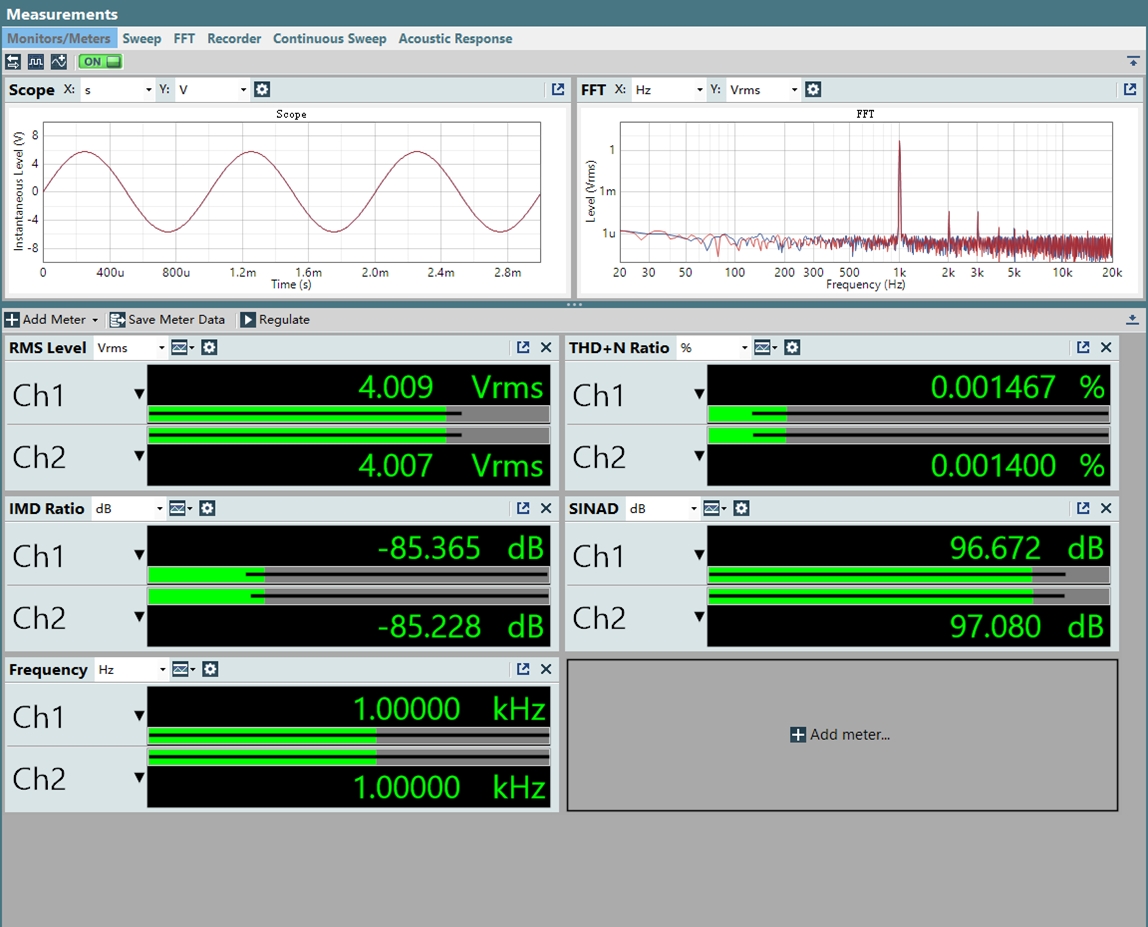
The 3.5mm SINAD score of 104.5 is pretty competitive with, for example, this is a similar value to the Schiit Magni 3+
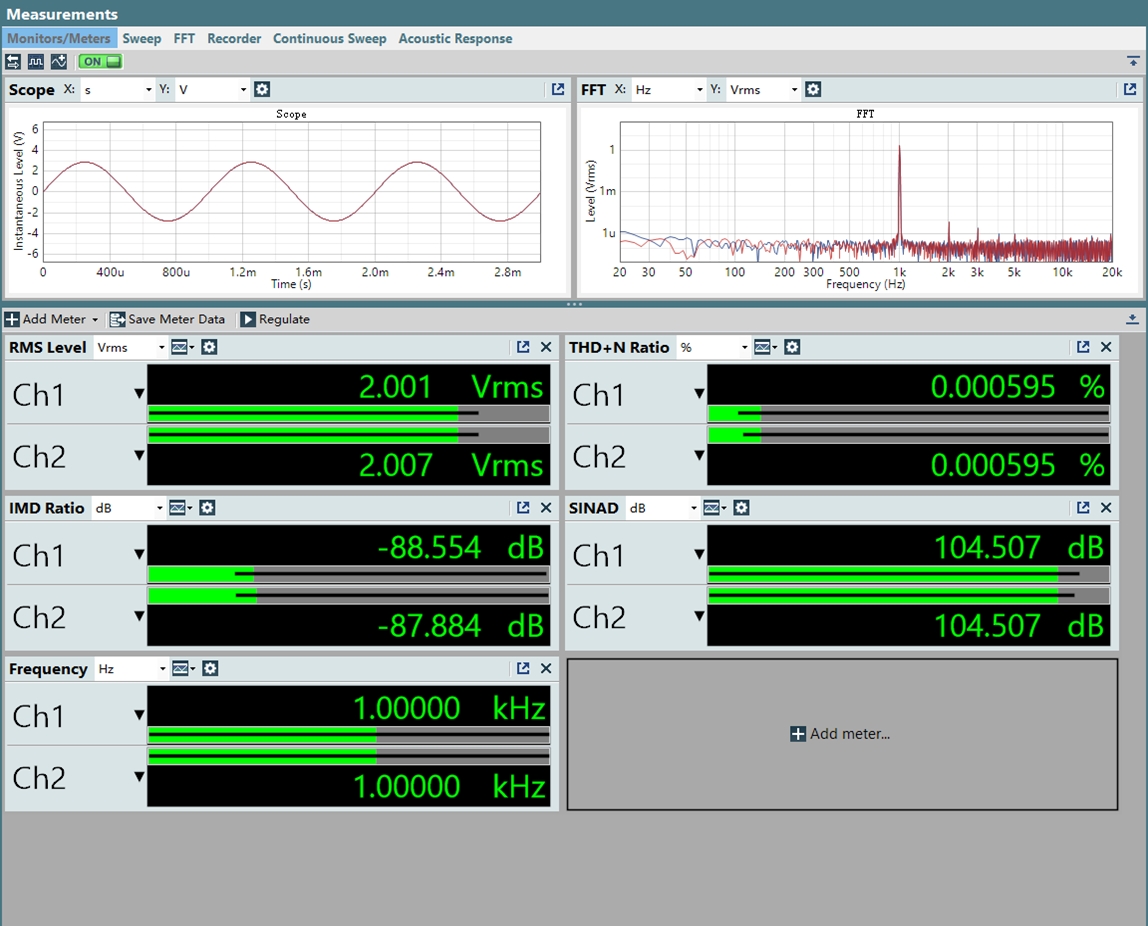
The following table shows an excellent amount of power from both the 3.5mm and the 4.4mm headphone jacks:
This shows that the K11 can drive most demanding headphones easily and when I used the K11 with my more demanding planars it was not found wanting.
For those interested FiiO provides extensive specifications on their website
K7 power for comparison - effectively the K7 has double the power of the K11:
Also, and its probably very subjective but I feel that the THX AAA 788+ Amplifier in the K7 sounded ‘cleaner’ than the dual SGM8262-2 in the K11.
But this is probably an unfair comparison considering the K7 is roughly double the price of the K11.
I cannot wait to see what FiiO will do with what I am guessing will eventually be called the K17.
I will be doing a long term review of the K7 very soon with more details.
In my opinion, those values are not competitive at all.
The TOPPING DX3pro+ DAC + Headphone Amp has some similar features to the K11 but it is also double the price and is more competitive with the FiiO K7.
Even then the topping does not have a balanced 4.4mm output so these figures are just for the 3.5mm:
When using headphones like the Hifiman XS and Sennheiser HD-600 benefit from the K11’s ability to provide that power over the balanced output for the absolute best sounding output.
There is no sense of colouring the output, so you are getting crystal clear sound the way it should be, contributing to an overall balanced sound profile.
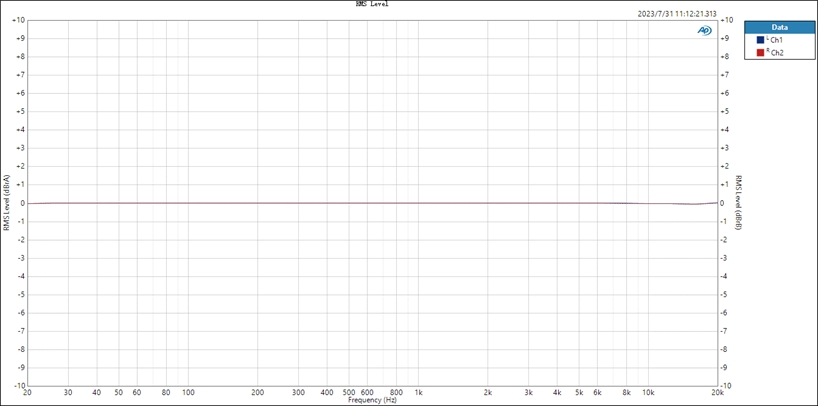
In my listening tests with my Hifiman Edition XS and HE-400SE I found the K11 had ample power to drive these planars both via the 3.5mm and via the 4.4mm jacks.
While there is no colouring of the sound with this amplifier, FiiO does provide the K11 with 6 interesting filters to play with the top end of the frequency response, for example, filter option 4 is a "slow roll off" filter which lowers the upper treble region earlier and might be useful for headphones with extra ‘peaky’ treble. But for me a "sharp roll off" ( filter 1 or 2 ) gives the most natural sounding response.
But for me the real star of the K11 is the features it provides and how easily accessible these are via the lovely screen.
In my opinion, the K11 sets a new standard in terms of both performance and budget-friendliness, making it the pragmatic choice for those who want a great headphone experience without breaking the bank.

Thanks to FiiO for providing me with the K11 for this review.
But the naming convention is not the only ’new’ aspect of this headphone amp. It is the first of this product line from FiiO to contain a screen with a new user interface and expose associated ‘platform’ with many features that are currently unique to the K11.A note about FiiO Naming:
I think its worth clarifying FiiO’s new device naming conventions. With a device name like the K11 - you might expect this headphone amplifier to be the top of FiiO range, considering FiiO already offer a K9, K7, K5 and even a K3.
But a quick check on FiiO website clarifies that they have adopted a new naming convention for their devices.
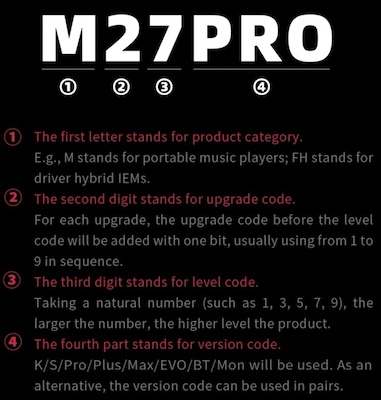
Therefore the 11 number actually means update 1 of a level 1. Therefore, we will no doubt see future headphone amps named K15, K17, K19’s as FiiO upgrade their range.
I would also expect future FiiO products K15, K17 etc to be based of this new platform and contain a similar display to access those features as the K11.
Before we get into the features and sound quality lets check the packaging:
What’s in the box
As you would expect from FiiO the packaging is excellent:
And nicely laid out within the box:

Once you take everything out of the box, as well as the power supply you get a USB cable and a 3.5mm adapter.

Looking at the K11 itself I thought it might be usefull to compare the size with the K7:

As you can see it is slightly wider but less tall than the K7, the underside of the K11 has a nice non-slip mat to keep it in place.
Around the back you a modern USB-C connection (instead of the older USB connection on the K7), a optical and a coaxial inputs and a RCA output (LO in FiiO terminal) for connection to an external amplifier or powered speaker.

Note: It lacks the RCA input that K7 provides but the interesting the coaxial can act as an output as well as input.
Overall the K11 has a very clean and well laid out design.
Features
So the K11 has a tremendous amount of features and there is allot going on behind that volume button.First the screen is small but easy visible and the ‘home’ page information is nicely laid out:

- the gain level (high, medium or low)
- the format (PCM or DSD)
- the output (PO for headphone, LO for Line out / RCA output and Coaxial output if connected)
- bitrate of the input in this case I have set the maximum availalbe via the UAC-2 option and set on my Macbook Pro
- the Volume level
- A short click access input switch - between the USB, Optical and Coaxial inputs - it returns to the default screen above after a timeout
- A long press and hold - this switches the display to show the options menu.
- Gain (High, Medium, Low) - see below
- Output (LO - Line out or PO headphone output)
- Filt - this is the filter menu and there are 6 filters available (more about this in the subjective listening section):
- 1 Minimum phase fast roll-off filter
- 2 Fast roll-off, Phase-compensated filter
- 3 Minimum phase slow roll-off filter
- 4 Slow roll-off, Phase-compensated filter
- 5 Wideband flatness filter
- 6 Non over-sampling filter
- UAC (1 or 2) - this option allows configuration of the USB-C connection - 1 is compatible with older devices while 2 has much higher bandwidth and supports 384K 32bit audio
- RGB - there are 3 separate menus for configuring the RGB on the top of the box
- LCD - there are 2 separate menus for brightness and timeout of the LCD on the front of the box
- Reset - this restores all the settings to their default
- Update - this restarts the K11 into update mode - I had no updates
- Return - back to the ‘home’ screen

Desktop and mobile DAC

When connected to a PC or MAC you can utilise the UAC 2 mode above and this provides excellent hi-res audio support of up to 384K.

When connected in UAC 1 mode it only supports 96 Khz:

Before we get into the sound quality and playing with some of these features, lets delve a little into the measurements:
I also tried the K11 with my new iPhone 15 (using its USB-C connection):

Though I was limited to 44khz output - this is an IOS restriction I believe.
Measurements & Specifications and technical comparisons
This being the FiiO entry level headphone DAC we should not expect SOTA measurements. The 2 core components of the K11 are its DAC which is a single CS43198 DAC and its headphone amplifier which is a dual SGM8262-2 setup. FiiO has already used these components in its entry level portable headphone Amp the Q11 but with the K11 they are using dual 8262-2 for a much more powerful amplification as we will see in the specification below.The CS43198 DAC itself is an excellent choice and used in many more expensive headphones amplifiers
and FiiO themselves has used this DAC in various configurations include dual CS43198 in the FiiO JadeAudio KA5.
I would not be surprised if we see a K13 or K15 with both dual CS43198 and dual SGM8262-2 in the next year.
By only having a single CS43198 the K11 does suffer from low THD+N / SINAD measurements especially when measuring
the balanced output as we can see in the figures below:
The 4.4mm balance SINAD score 97 is reasonable for an entry level device.

The 3.5mm SINAD score of 104.5 is pretty competitive with, for example, this is a similar value to the Schiit Magni 3+

The Line Out of the K11 has THD+N value of 0.00035% which is a SINAD of 108.57 dB which is an excellent score for an entry level DAC, though also certainly not "state of the art".Note: While the THD+N / SINAD ‘score’ is an excellent measure of engineering excellence, once you get a score in the 90+ range the difference are mostly of engineering interested, as any differences will be in-audible. Therefore, in an entry level device these measurements are perfectly acceptable.
Higher SINAD is really for those chasing excellence that they cannot hear.
Headphone output Power
In my opinion, the power output of a headphone amplifier is much more important, once a reasonable level of THD+N / SINAD has been reached and the K11 does not disappoint.The following table shows an excellent amount of power from both the 3.5mm and the 4.4mm headphone jacks:
| Power (L + R) | Ohms | THD+N | |
|---|---|---|---|
| 3.5mm (Single Ended) | 720mW+720mW | 16Ω | < 1% |
| 520mW+520mW | 32Ω | < 1% | |
| 60mW+60mW | 300Ω | < 1% | |
| 4.4mm (Balanced) | 570mW+570mW | 16Ω | < 1% |
| 1400mW+1400mW | 32Ω | < 1% | |
| 250mW+250mW | 300Ω | < 1% |
For those interested FiiO provides extensive specifications on their website
Technical Comparisons
I have been a long term fan and daily user of the FiiO K7 and I was fastinated to see how the K11 would stack up against it. I was also keen to see how the K11 would compare with the entry level headphone dac’s from SMSL and Topping.Compared to the K7:
The K11 has many many more features than the K7, but the K7 does have more power and has much better measurements. It also a few simple features that I did miss when using the K11, specifically a simple switch on the front to switch inputs, but I missed the volume control on the K7 as it is much more premium than the one on the K11.K7 power for comparison - effectively the K7 has double the power of the K11:
| Power (L + R) | Ohms | THD+N | |
|---|---|---|---|
| 6.3mm (Single Ended) | 1220mW+1220mW | 32Ω | < 1% |
| 140mW+140mW | 300Ω | < 1% | |
| 4.4mm (Balanced) | 2000mW+2000mW | 32Ω | < 1% |
| 560mW+560mW | 300Ω | < 1% |
But this is probably an unfair comparison considering the K7 is roughly double the price of the K11.
I cannot wait to see what FiiO will do with what I am guessing will eventually be called the K17.
I will be doing a long term review of the K7 very soon with more details.
Compared to the SMSL M300SE:
The SMSL support MQA files, supports up to 768khz 32bit DSD files and has better SINAD scores. But in the more important area, output power the SMSL is massively lacking compared to the K11:| Power (L + R) | Ohms | THD+N | |
|---|---|---|---|
| 4.4mm (Balanced) | 148mw+148mW | 32Ω | < 1% |
| 15mW+15mW | 300Ω | < 1% |
Compared to similar priced offerings from TOPPING
Topping doesn’t have a similar priced offering to the K11, their base models are either a basic DAC without headphone output like the D10 or a headphone amp / pre-amp like the L30. While some people will prefer having 2 separate devices it effectively double the price compared to the K11.The TOPPING DX3pro+ DAC + Headphone Amp has some similar features to the K11 but it is also double the price and is more competitive with the FiiO K7.
Even then the topping does not have a balanced 4.4mm output so these figures are just for the 3.5mm:
| Power (L + R) | Ohms | THD+N | |
|---|---|---|---|
| 3.5mm (Single Ended) | 1800mW+1800mW | 32Ω | < 1% |
| 900mW+900mW | 64Ω | < 1% | |
| 250mW+250mW | 300Ω | < 1% |
Sound Impressions
FiiO’s DACs and amps are known for their ability to provide a clean neutral listening experience, and the K11 lives up to this reputation.When using headphones like the Hifiman XS and Sennheiser HD-600 benefit from the K11’s ability to provide that power over the balanced output for the absolute best sounding output.
There is no sense of colouring the output, so you are getting crystal clear sound the way it should be, contributing to an overall balanced sound profile.

In my listening tests with my Hifiman Edition XS and HE-400SE I found the K11 had ample power to drive these planars both via the 3.5mm and via the 4.4mm jacks.
While there is no colouring of the sound with this amplifier, FiiO does provide the K11 with 6 interesting filters to play with the top end of the frequency response, for example, filter option 4 is a "slow roll off" filter which lowers the upper treble region earlier and might be useful for headphones with extra ‘peaky’ treble. But for me a "sharp roll off" ( filter 1 or 2 ) gives the most natural sounding response.
Summary
The K11 is an amazing bargain and for those looking to get into the hobby it is a great feature rich first headphone amp. It might even be the only headphone amplifier you will ever need, given the K11 power especially from its balanced headphone jack.But for me the real star of the K11 is the features it provides and how easily accessible these are via the lovely screen.
In my opinion, the K11 sets a new standard in terms of both performance and budget-friendliness, making it the pragmatic choice for those who want a great headphone experience without breaking the bank.
Last edited:
o0genesis0o
Great review, mate!
baskingshark
Headphoneus Supremus
Pros: Solid build
Very small and light in profile
Multiple input and output options
6 DAC filter options, beautiful LCD display
3 gain settings with good power on tap
Neutralish tonality without colouration
Smooth but detailed treble, transparent midrange
Good technical chops for the coin
Does not get hot during usage
Hiss-free
Very small and light in profile
Multiple input and output options
6 DAC filter options, beautiful LCD display
3 gain settings with good power on tap
Neutralish tonality without colouration
Smooth but detailed treble, transparent midrange
Good technical chops for the coin
Does not get hot during usage
Hiss-free
Cons: Highish output impedance on balanced output may not synergize well with low impedance transducers
Some rival amps may have a bit more power, but the K11 should still be able to drive most gear out there
No pre-amp function
Some rival amps may have a bit more power, but the K11 should still be able to drive most gear out there
No pre-amp function
DISCLAIMER
This unit was purchased at a discounted price from Aliexpress.
It can be gotten here: https://www.aliexpress.us/item/3256805893537021.html (no affiliate links).
It retails at $129.99 USD

SPECIFICATIONS
DAC: Cirrus Logic CS43198 chip
Weight: 407g
Dimensions: 147 x 133 x 32.3mm
Gain settings: low, medium, high
Max sampling rate:
384kHz-32bit/DSD256 Native 16/24/32bit (USB DAC)
192kHz-24bit (Coaxial)
96kHz-24bit (Optical)
Adaptive impedance: PO: 8 - 150Ω; Balanced: 8 - 350Ω
Input: USB Type-C, optical, coaxial
Output: Single-ended 6.35mm (or 3.5mm with adapter), balanced 4.4mm, RCA, coaxial out
Power supply: DC 12V/2A
Output power (single-ended): L+R≥720mW +720mW (16Ω, THD+N<1%); L+R≥520mW +520mW (32Ω, THD+N<1%); L+R≥60mW+60mW (300Ω, THD+N<1%). Balanced: L+R≥570mW+570mW (16Ω, THD+N<1%); L+R≥1400mW+1400mW (32Ω, THD+N<1%); L+R≥250mW+250mW (300Ω, THD+N<1%)
Output impedance (single-ended):<1.2Ω; Balanced:<2.4Ω
Crosstalk (single-ended): ≥71dB; Balanced: ≥106dB
Peak output voltage (single-ended): 12Vp-p; Balanced: 24.5Vp-p
SNR (single-ended): ≥123dB (A-weighted); Balanced: ≥123dB (A-weighted)
THD+N & Noise (single-ended):<0.00059% (1kHz/-8.1dB@32Ω); Balanced:<0.0010% (1kHz/-14.5dB@32Ω)

For the measurement-inclined, you can go to this link (https://www.fiio.com/k11_parameters) to check out finer details on the specs, measurements and data of the K11 during field tests.
ACCESSORIES

Other than the K11, these are included:
- 6..35mm to 3.5mm adapter
- 1 x USB-A to USB-C cable
- Power plug (DC 12V 2A)

Perhaps only Apple users amongst us might need to source for an adapter, but otherwise, out-of-the box, the provided accessories should be more than serviceable for Android or Windows users.
DESIGN/FUNCTION
During ordering, one can opt for a silver or black K11. This DAC/Amp comes in a squarish design, and is made of aluminum alloy Build is very solid.

Weighing in at slightly above 400g, and measuring 147 x 133 x 32mm, the K11 is very sleek and light. I like that it can be put flat, stacked on other sources, or can also be stood upright, if there is not enough space at the desk. Thus, this device is pretty space-conserving.
The front of the device contains a 6.35mm (single-ended) and 4.4mm (balanced) port. One can utilize the 3.5mm to 6.35mm jack if you need to pair a 3.5mm terminated transducer with the K11. The front also has a gorgeous LCD screen and volume knob.

The volume knob performs many roles. Other than fine-tuning the volume, it also functions as a:
- power button for turning on/off the K11
- accessing the settings menu
- line-out/PO toggling function
There is a haptic click felt with each turn of the knob, and I liked that this device has very fine levels of volume control with this knob.
On the LCD screen, one can glean information such as sampling rate, volume, gain and output/input mode.

All the edges of the K11 are rounded with no sharp protrusions.

The K11's base sports anti-slip rubberized feet.

On the back of the DAC/Amp, we have the power supply, USB-C, optical, co-axial and RCA ports. The K11 has multiple inputs and outputs, to pair with most appliances upstream and downstream.

The K11's top has an RGB lighting.

In the settings menu, one can play with options such as gain settings, DAC filters (there are 6 available) and lighting. Specific to the last department, one can modify the colour, brightness and flashing status of the RGB lights:

Please play with the various DAC filters to see what suits your needs.
Of note, the K11 utilizes 16 low-noise LDOs, fed by a 12V external power supply, which Fiio says contributes to better audio quality.
Indeed, I did not get any hiss on the K11 on both the balanced and single-ended ports, even on the usual high sensitivity suspects. Some DAC/Amps suffer from a huge "pop" during insertion or removal of gear, and I'm glad to report that the K11 does not have this issue.

SOUND
I'm not an Apple user, but with various Windows laptops/PCs, smartphones and DAPs, the K11 was recognized and paired with ease. For Windows 10 and 11 users, this device is plug-and-play without the need to install drivers.
Sadly, the K11 does not have any pre-amp or Bluetooth functionality.
This baby can provide these power specs via 3 gain settings:
Single-ended can hit up to 520mW @ 32ohm or 60mW @ 300ohm.
Balanced can go up to 1400mW @ 32ohm, or 250mW @ 300ohm.
Indeed, the balanced 1400mW juice on tap should be able to power most gear out there.

My usual acid tests for source testing include these gear:
1) Final Audio E5000 (low sensitivity at 93dB/mW)
2) Sennheiser HD650 (high impedance at 300ohm)
3) Yinman 600 ohm (600 ohm impedance and 87db/mW sensitivity)
When underpowered, it is not a volume issue, but the above transducers sound undynamic, untextured and one-noted in the bass. Happily, the K11 handled all these with aplomb with additional headroom to spare. No worries about driving tough customers here!
Big power sometimes comes with comprises, but I'm glad to report that there is no hiss heard here with fussy IEMs.
The K11 furnishes an uncoloured neutral tuning. It is very "clean" sounding, and lets the connected transducer do the talking. However, folks who want a more lush tone to notes, or a warmish analogue signature might need to look elsewhere. Timbral accuracy is quite natural.
Bass is neutral but extends deep. The midrange is very transparent on a dark background. Treble is relatively smooth and isn't as glaring or fatiguing as some other amps that overly boost this region for "fake clarity".
For the price, it has solid technicalities. Soundstage is above average in all 3 dimensions, with good micro-detailing. Imaging and instrument separation are quite well done, and on poorly recorded tracks, one can hear the warts and all.
One negative point would be the output impedance of 2.4ohm (@ 32ohm) for the balanced port. It is a bit on the high side, and based on the rules of eights, this might not be the best option for low impedance fussy IEMs that have a variable impedance curve, as the frequency response might be skewed. Having said that, one can avoid this by just keeping low impedance gear to the single-ended port, which has acceptable values of 1.2ohm (@ 32ohm).
This DAC/Amp does not get warm even on higher gain/outputs, with demanding gear, which is something much appreciated.
COMPARISONS

Schiit Asgard 3
Tonally, the Asgard 3 is warmer, bassier and more analoguish sounding, with a thicker note weight. The Asgard 3 is less resolving with poorer micro-detailing and soundstage, though it has better instrument separation and layering.
Even though the Asgard 3 only has a single-ended output, it has more power on tap, providing a whopping 600mW at 300ohms. The Asgard 3 also has a lower output impedance of 0.2ohms in both low and high gain, perhaps making it more compatible with fussy low impedance gear.
The Asgard 3 however, gets very hot during usage, and is much larger and heavier in profile. Of note, it is also more than double the price of the K11.
Topping L30
The L30 is a very sterile and analytical sounding piece of kit, and eschews musicality for the critical scalpel of dissecting music. The L30 has a thinner note weight and is sharper and more fatiguing in the upper mids/treble. One can argue that the L30 uses some overly boosted upper frequencies to generate "fake details".
Timbre wise, the L30 is a bit more metallic. The L30 is only single-ended but also has 3 gain settings, and has a similar power output as the K11 with 280mW into 300Ω.
The L30 gets much warmer during usage, and the earlier batches were actually recalled due to electrostatic discharge and grounding issues that destroyed a few headphones (https://imgur.com/v5Ja7f3)!
CONCLUSIONS

After upgrading the transducer, the next step in the audio chain is arguably to get a quality source. This is an important - yet underrated - aspect, allowing consumers to scale a connected transducer to let it shine.
Priced at a relatively affordable $129.99 USD, the K11 is attractively priced, and would be a sound investment (no pun intended) for the budget-conscious audiophile who is looking for a source to future proof the hobby. In fact, it can give some pricier amps a run for their money!
The K11 is a very uncoloured instrument, bestowing a neutralish sound with good technical chops. It has big power on tap with 3 gain settings. This DAC/Amp is solidly built, with a Lilliputian profile that doesn't consume precious desktop space. It has various input and output options, with 6 DAC filters, and is hiss-free, and very importantly, doesn't get hot during usage.

Not everything is perfect though. The K11's highish output impedance on the balanced port makes it a sub-optimal pairing for low impedance gear, and there is no pre-amp function. Additionally, there may be rival amps with more raw power, but the K11 should nevertheless have no issue powering most gear out there.
The K11 aces most departments for a lowish $100 price, and should definitely be considered in the conversation if you are looking for a reasonably priced DAC/Amp.
This unit was purchased at a discounted price from Aliexpress.
It can be gotten here: https://www.aliexpress.us/item/3256805893537021.html (no affiliate links).
It retails at $129.99 USD

SPECIFICATIONS
DAC: Cirrus Logic CS43198 chip
Weight: 407g
Dimensions: 147 x 133 x 32.3mm
Gain settings: low, medium, high
Max sampling rate:
384kHz-32bit/DSD256 Native 16/24/32bit (USB DAC)
192kHz-24bit (Coaxial)
96kHz-24bit (Optical)
Adaptive impedance: PO: 8 - 150Ω; Balanced: 8 - 350Ω
Input: USB Type-C, optical, coaxial
Output: Single-ended 6.35mm (or 3.5mm with adapter), balanced 4.4mm, RCA, coaxial out
Power supply: DC 12V/2A
Output power (single-ended): L+R≥720mW +720mW (16Ω, THD+N<1%); L+R≥520mW +520mW (32Ω, THD+N<1%); L+R≥60mW+60mW (300Ω, THD+N<1%). Balanced: L+R≥570mW+570mW (16Ω, THD+N<1%); L+R≥1400mW+1400mW (32Ω, THD+N<1%); L+R≥250mW+250mW (300Ω, THD+N<1%)
Output impedance (single-ended):<1.2Ω; Balanced:<2.4Ω
Crosstalk (single-ended): ≥71dB; Balanced: ≥106dB
Peak output voltage (single-ended): 12Vp-p; Balanced: 24.5Vp-p
SNR (single-ended): ≥123dB (A-weighted); Balanced: ≥123dB (A-weighted)
THD+N & Noise (single-ended):<0.00059% (1kHz/-8.1dB@32Ω); Balanced:<0.0010% (1kHz/-14.5dB@32Ω)

For the measurement-inclined, you can go to this link (https://www.fiio.com/k11_parameters) to check out finer details on the specs, measurements and data of the K11 during field tests.
ACCESSORIES

Other than the K11, these are included:
- 6..35mm to 3.5mm adapter
- 1 x USB-A to USB-C cable
- Power plug (DC 12V 2A)

Perhaps only Apple users amongst us might need to source for an adapter, but otherwise, out-of-the box, the provided accessories should be more than serviceable for Android or Windows users.
DESIGN/FUNCTION
During ordering, one can opt for a silver or black K11. This DAC/Amp comes in a squarish design, and is made of aluminum alloy Build is very solid.

Weighing in at slightly above 400g, and measuring 147 x 133 x 32mm, the K11 is very sleek and light. I like that it can be put flat, stacked on other sources, or can also be stood upright, if there is not enough space at the desk. Thus, this device is pretty space-conserving.
The front of the device contains a 6.35mm (single-ended) and 4.4mm (balanced) port. One can utilize the 3.5mm to 6.35mm jack if you need to pair a 3.5mm terminated transducer with the K11. The front also has a gorgeous LCD screen and volume knob.

The volume knob performs many roles. Other than fine-tuning the volume, it also functions as a:
- power button for turning on/off the K11
- accessing the settings menu
- line-out/PO toggling function
There is a haptic click felt with each turn of the knob, and I liked that this device has very fine levels of volume control with this knob.
On the LCD screen, one can glean information such as sampling rate, volume, gain and output/input mode.

All the edges of the K11 are rounded with no sharp protrusions.

The K11's base sports anti-slip rubberized feet.

On the back of the DAC/Amp, we have the power supply, USB-C, optical, co-axial and RCA ports. The K11 has multiple inputs and outputs, to pair with most appliances upstream and downstream.

The K11's top has an RGB lighting.

In the settings menu, one can play with options such as gain settings, DAC filters (there are 6 available) and lighting. Specific to the last department, one can modify the colour, brightness and flashing status of the RGB lights:

Please play with the various DAC filters to see what suits your needs.
Of note, the K11 utilizes 16 low-noise LDOs, fed by a 12V external power supply, which Fiio says contributes to better audio quality.
Indeed, I did not get any hiss on the K11 on both the balanced and single-ended ports, even on the usual high sensitivity suspects. Some DAC/Amps suffer from a huge "pop" during insertion or removal of gear, and I'm glad to report that the K11 does not have this issue.

SOUND
I'm not an Apple user, but with various Windows laptops/PCs, smartphones and DAPs, the K11 was recognized and paired with ease. For Windows 10 and 11 users, this device is plug-and-play without the need to install drivers.
Sadly, the K11 does not have any pre-amp or Bluetooth functionality.
This baby can provide these power specs via 3 gain settings:
Single-ended can hit up to 520mW @ 32ohm or 60mW @ 300ohm.
Balanced can go up to 1400mW @ 32ohm, or 250mW @ 300ohm.
Indeed, the balanced 1400mW juice on tap should be able to power most gear out there.

My usual acid tests for source testing include these gear:
1) Final Audio E5000 (low sensitivity at 93dB/mW)
2) Sennheiser HD650 (high impedance at 300ohm)
3) Yinman 600 ohm (600 ohm impedance and 87db/mW sensitivity)
When underpowered, it is not a volume issue, but the above transducers sound undynamic, untextured and one-noted in the bass. Happily, the K11 handled all these with aplomb with additional headroom to spare. No worries about driving tough customers here!
Big power sometimes comes with comprises, but I'm glad to report that there is no hiss heard here with fussy IEMs.
The K11 furnishes an uncoloured neutral tuning. It is very "clean" sounding, and lets the connected transducer do the talking. However, folks who want a more lush tone to notes, or a warmish analogue signature might need to look elsewhere. Timbral accuracy is quite natural.
Bass is neutral but extends deep. The midrange is very transparent on a dark background. Treble is relatively smooth and isn't as glaring or fatiguing as some other amps that overly boost this region for "fake clarity".
For the price, it has solid technicalities. Soundstage is above average in all 3 dimensions, with good micro-detailing. Imaging and instrument separation are quite well done, and on poorly recorded tracks, one can hear the warts and all.
One negative point would be the output impedance of 2.4ohm (@ 32ohm) for the balanced port. It is a bit on the high side, and based on the rules of eights, this might not be the best option for low impedance fussy IEMs that have a variable impedance curve, as the frequency response might be skewed. Having said that, one can avoid this by just keeping low impedance gear to the single-ended port, which has acceptable values of 1.2ohm (@ 32ohm).
This DAC/Amp does not get warm even on higher gain/outputs, with demanding gear, which is something much appreciated.
COMPARISONS

Schiit Asgard 3
Tonally, the Asgard 3 is warmer, bassier and more analoguish sounding, with a thicker note weight. The Asgard 3 is less resolving with poorer micro-detailing and soundstage, though it has better instrument separation and layering.
Even though the Asgard 3 only has a single-ended output, it has more power on tap, providing a whopping 600mW at 300ohms. The Asgard 3 also has a lower output impedance of 0.2ohms in both low and high gain, perhaps making it more compatible with fussy low impedance gear.
The Asgard 3 however, gets very hot during usage, and is much larger and heavier in profile. Of note, it is also more than double the price of the K11.
Topping L30
The L30 is a very sterile and analytical sounding piece of kit, and eschews musicality for the critical scalpel of dissecting music. The L30 has a thinner note weight and is sharper and more fatiguing in the upper mids/treble. One can argue that the L30 uses some overly boosted upper frequencies to generate "fake details".
Timbre wise, the L30 is a bit more metallic. The L30 is only single-ended but also has 3 gain settings, and has a similar power output as the K11 with 280mW into 300Ω.
The L30 gets much warmer during usage, and the earlier batches were actually recalled due to electrostatic discharge and grounding issues that destroyed a few headphones (https://imgur.com/v5Ja7f3)!
CONCLUSIONS

After upgrading the transducer, the next step in the audio chain is arguably to get a quality source. This is an important - yet underrated - aspect, allowing consumers to scale a connected transducer to let it shine.
Priced at a relatively affordable $129.99 USD, the K11 is attractively priced, and would be a sound investment (no pun intended) for the budget-conscious audiophile who is looking for a source to future proof the hobby. In fact, it can give some pricier amps a run for their money!
The K11 is a very uncoloured instrument, bestowing a neutralish sound with good technical chops. It has big power on tap with 3 gain settings. This DAC/Amp is solidly built, with a Lilliputian profile that doesn't consume precious desktop space. It has various input and output options, with 6 DAC filters, and is hiss-free, and very importantly, doesn't get hot during usage.

Not everything is perfect though. The K11's highish output impedance on the balanced port makes it a sub-optimal pairing for low impedance gear, and there is no pre-amp function. Additionally, there may be rival amps with more raw power, but the K11 should nevertheless have no issue powering most gear out there.
The K11 aces most departments for a lowish $100 price, and should definitely be considered in the conversation if you are looking for a reasonably priced DAC/Amp.
Last edited:
dirtdawg
Thanks! The screen and aesthetics of it are very tempting, but if the SQ isn't much better than what I'm currently getting out of my DX1, I might skip over it. I'm also considering the topping DX3 pro+.
baskingshark
Hi @lior777 nope it is not warm, but neutral and clean sounding.













